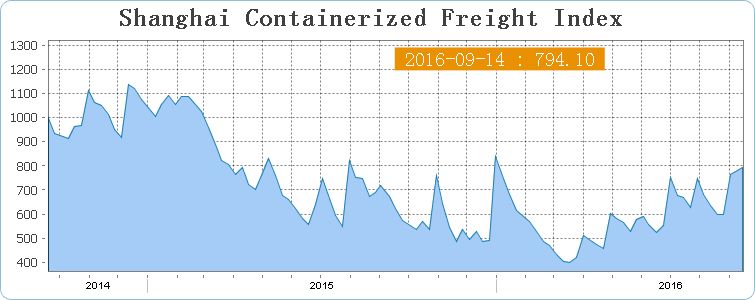Why Do Freight Rates Change So Often?
In the previous post “Pricing Challenge in Container Shipping” we mentioned that it’s not easy to structure freight tariffs and send instant freight quotes. The reason being the high complexity of the transportation costs: up to 25 variable charges plus the overall rate volatility caused by the supply and demand imbalance.
Looking at the whole end to end process, it seems logical that transportation price consists of multiple components because the cargo literally travels half of the globe one way. However, importers and exporters do not like that complexity when it comes to paying freight invoices. The issue often sparks debates and the most popular solution on the table is to quote All-IN rates in order to limit the number of charges in question and simplify the pricing structure.
At Quotiss, we support any process simplification, and we also offer a solution to the complicated freight rates.
Why Do Freight Rates Change Often (Technically)
Rate volatility is an issue that adds complexity to the freight rate management process.
Let’s take a closer look at the ocean freight rate structure to check where this volatility originates. Out of all components, the majority of freight and local charges are fixed and change very rarely, for example THC (terminal handling charge). A few charges change approx. every quarter, like BAF (bunker surcharge). Some of the charges are seasonal, like PSS (peak season surcharge) or WSC (winter season surcharge).
There are many different surcharges when it comes to ocean freight, there is only one that changes very frequently. It is BAS (basic freight).
Technically, basic freight (BAS) is the main driving force for ocean freight rate volatility. Following the 80/20 rule of Pareto, if there is an efficient tool to manage frequent BAS changes, then 80% of the ocean freight tariffs will be updated automatically.
Why Do Freight Rates Change Often (Commercially)
Simple and straightforward – freight rates are determined by supply and demand. Market forces are the main driving factor behind the freight rate fluctuations. Factors such as fuel prices, distance traveled, terminal costs, etc. don’t impact freight rates as much as supply and demand do.
In recent years, shipping lines have been building bigger and bigger ships to benefit from the economy of scale. The global economy has also been growing but at a much slower pace. That distortion resulted in an increasing gap between supply and demand. This is the main and most important reason why freight rates are hitting the record low values in recent years. Cheaper fuel may also contribute to the overall picture, but it will never be the most significant factor. Ocean shipping companies won’t be able to keep rates from sliding if they don’t idle more ships.
According to the United Nations Conference on Trade and Development (UNCTAD):
“In general terms, the demand and the supply of maritime transport services interact with each other to determine freight rates. While there are countless factors affecting supply and demand, the exposure of freights rates to market forces is inevitable. Cargo volumes and demand for maritime transport services are usually the first to be hit by political, environmental and economic turmoil. Factors such as a slowdown in international trade, sanctions, natural disasters and weather events, regulatory measures and changes in fuel prices have an impact on the world economy and global demand for seaborne transport. These changes may occur quickly and have an immediate impact on demand for maritime transport services. As to the supply of maritime transport services, there is generally a tendency of overcapacity in the market, given that there are no inherent restrictions on the number of vessels that can be built and that it takes a long time from the moment a vessel order is placed to the time it is delivered, and is ready to be put in service.
Therefore, maritime transport is very cyclical and goes through periods of continuous busts and booms, with operators enjoying healthy earnings or struggling to meet their minimum operating costs.”
Complexity vs Simplicity
The end customer (importer or exporter) does not really care about all these factors. They just need to know what is the total price for transporting a container from A to B. They want the best freight quote, which is easy to understand, as soon as possible.
Shipping lines and freight forwarders face numerous troubles managing millions of ocean freight rates. They struggle to provide freight quotes quickly and accurately. The majority of forwarders still use MS Excel spreadsheets to manage rates.
E-mailing of the bulky MS Excel files back and forth is often the main communication channel between pricing and sales teams. Millions of MS Excel files are sent back and forth, which leads to the loss of revenues and increases the count of manual errors.
At Quotiss, we tackle the main problem of the industry from a different angle: instead of digitizing the enormous complexity of freight rates, we dramatically simplify the freight rate management process, reducing the number of variables in the equation.
Freight rate complexity can be reduced by 99%, following the data patterns discovered by Pareto 100 years ago.
Quotiss sales automation software generates 100% accurate quotes in seconds. The software is user-friendly and tailored to the freight forwarding business. It brings order and structure.
Would You Like a Quick Start with Quotiss?
Click here to register your company. We’ll activate your company’s profile and help with the initial settings and user onboarding. You can start uploading your freight ratesheets and quoting freight from Quotiss on the same day we sign the deal.

